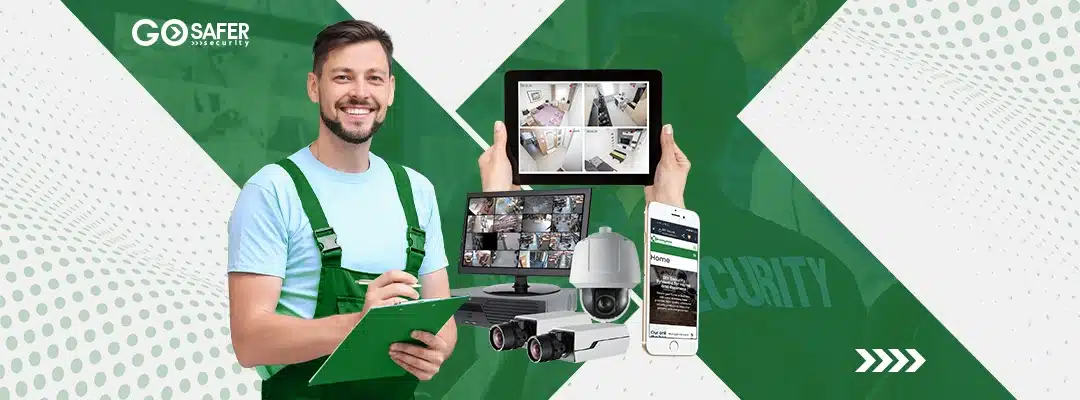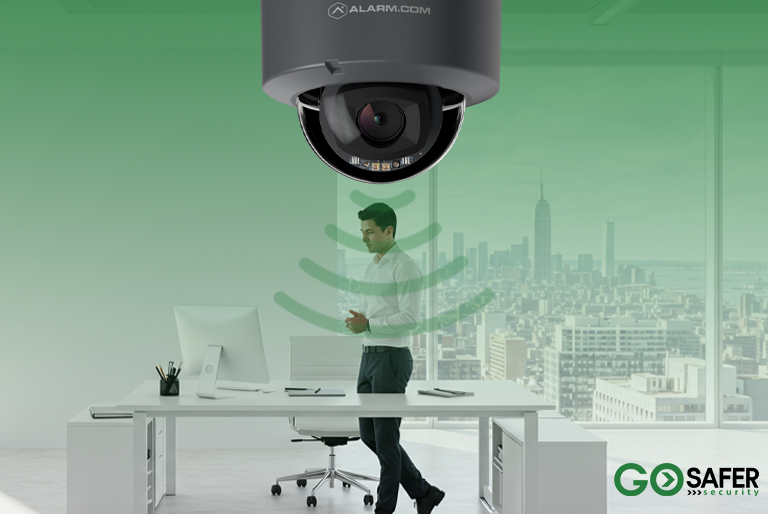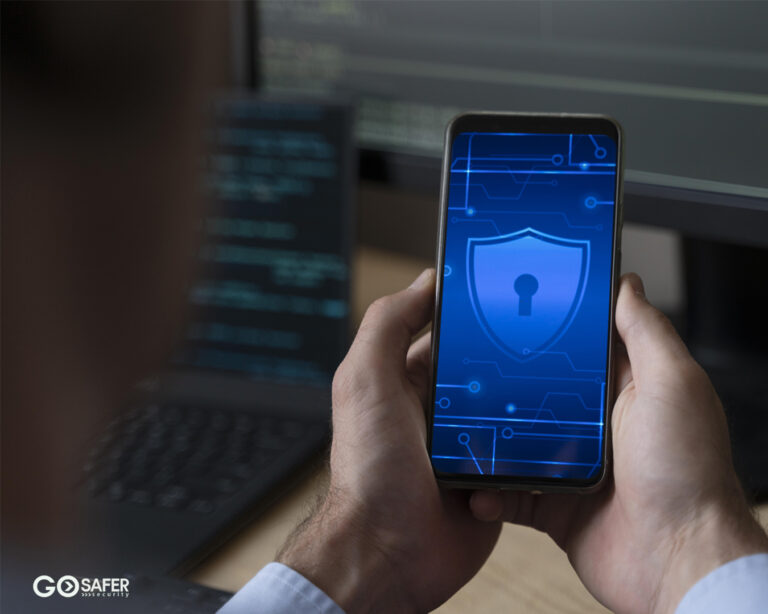In today’s world, ensuring safety and security has become a top priority for individuals, organizations, and governments alike. The growing concern for safety and the need to have a secure environment has led to the deployment of a broad range of physical security measures. Among these measures are access control systems, which limit entry to buildings, hallways, and other restricted areas, as well as security cameras and alarms, which are designed to detect and record intrusions. The effective implementation of physical security and access control systems is critical in creating a safe and secure environment in various settings, including commercial buildings, schools, hospitals, and government facilities. This article will explore the role of physical security and access control systems in ensuring safety, the benefits of deploying these systems, and the various types of systems available.
Table of Contents
ToggleThe Importance of Physical Security: A Comprehensive Overview
Why physical security is important to businesses? Physical security is an important issue in any office, school, hospital, or government building. It is defined as the process of hardening the physical security of a building, so as to protect the occupants from external attacks.
Physical security is a component of Physical Security Systems (PSS), which are designed to provide security for buildings and their contents. Physical Security Systems include Access Control and Surveillance Systems, which are designed to prevent unauthorized access to secured areas.
Physical Security Components include: CCTV, Access Control Systems, Video Intercom Systems, Alarms, Burglar Alarms, and more. Access Control Systems are designed to control access to a building or area, and typically consist of an entry device, such as card reader, or a biometric device, such as a finger print scanner. Surveillance Systems are designed to monitor activity in and around a building or area, and typically include CCTV cameras and motion detectors.
Physical Security also includes the use of physical barriers, such as fences, walls, and locks. These barriers are designed to prevent access to the building, as well as to provide a visual deterrent to potential intruders. Physical barriers also help to create a more secure environment by limiting the number of people who can access the building or area at any given time.
Finally, Physical Security also involves the use of security personnel. Security personnel or security guards are trained to detect and respond to any security threats, and are responsible for the safety and security of the premises. Security personnel may be employed by a company, or by a private security firm.
Access Control Systems: How they Work and Why they Matter
In simple terms, Access Control Systems are automated computerized locking and security systems that grant or deny access to certain areas and buildings according to a user’s credentials. They have become an essential tool in controlling the flow of people in and out of restricted areas, and buildings, and are also one of the most common ways to enforce workplace safety.
Access control systems not only ensure security, but also provide business owners and facility managers with reliable and efficient means of managing their facilities and employees. Here are some reasons why Access Control Systems matter:
- Time and cost efficient: Access control systems save both time and money. Setting up access control in a building can take several days or weeks, but automation systems can be integrated onto a network in a matter of minutes. They don’t require many workers or significant resources, and can handle thousands of users with ease.
- Improved access control: System administrators can easily manage access control and user permissions. They can give users or employees access to specific areas of a building, or set time restrictions for building access. They can also employ proximity cards, fingerprint readers, and even facial recognition to identify users, and change access permissions in real time.
- Safety and control: Access control systems help increase the security of a building or facility, preventing unauthorized personnel from gaining access to restricted areas. They can also be used to enforce workplace safety protocols, ensuring that employees can only access certain areas in your facility during a specific time of day.
- Increased efficiency: By controlling the flow of people in and out of buildings and facilities, access control systems can help increase operational efficiency. They can save business owners and facility managers valuable time and resources, and increase productivity overall.
- Improved security: Access control systems improve the security of restricted areas, making it harder for unauthorized personnel to gain access to restricted areas. They can also record and detect suspicious activities or movements, and notify authorities in real time.
- Cost savings: By controlling who can access a facility, access control systems can help businesses save money in the long run.
The Components of Physical Security: Deep Understanding Of Each Element
There are 3 main components of physical security, which are identification, authentication, and authorization.
- Identification: The identification system is comprised of several components that work together to ensure that only authorized visitors/employees have access to protected areas. These components include cards, badges, electronic locks or keys, and biometrics.
- Authentication: Authentication means proving that someone indeed is who they claim to be, by verifying their identification with one or more of:
-
- Something they have (e.g., a smart card, fob, laptop, phone, etc.).
-
Something they know (e.g., PIN, password, token).
-
Something they are (e.g., biometrics, retina scan, finger print, voice pattern).
- Authorization: The authorization system is where Access Control Systems come into play, allowing employees access to certain areas based on their identification. Once authenticated, a user may be granted access through any one of several different authorization methods, such as:
-
- Access control software.
-
- A computer.
-
- An alarm system.
-
- An electronic card reader.
-
- A biometric system.
-
- A proximity card reader.
-
- A door or turnstile.
These are just some of the access control systems available to businesses that can help to ensure the safety and security of their personnel and property.
Common Physical Security Threats and How to Protect Against Them
Physical security is of particular concern in today’s society. As technology advances, criminals have become more intelligent and resourceful in how they attack businesses and homes.
Protecting your property against physical security threats is important, especially if you own a business – or if you are part of the greater community.
Here are the top four physical security threats, and what you can do to protect your property:
- Burglars: Burglars are individuals who break into homes and businesses with the intent to steal valuable items. They can enter through windows, doors, and windows, or they may simply walk by and open doors that are normally locked.
- Vandals: Vandals are individuals who cause intentional damage to property. This can include graffiti, breaking windows or signs, defacing property, damaging crops, or damaging fences, walls, or road signs.
- Fire: Fire is another physical threat that businesses should prepare for, as well as the rest of the community. Fires can be caused by faulty wiring, overloaded electrical circuits, or smoking materials.
- Theft: Theft is an act of stealing from a person or business. Thieves can steal valuable items such as electronics, jewelry, or cash. They can also steal documents, records, or official documents, or they can steal inventory and medical supplies (e.g., prescription drugs).
To prevent burglars, vandals, and thieves from targeting your property, it’s important to have proper physical security in place. This can include security signs, security cameras, alarm systems, and locks.
The Benefits of a Physical Security System in a Business Environment
Security is one of the most important concerns in today’s society. With all the criminal activity that is going on around the world, it is very important to have the proper security in place for your home or business.
Security systems come in many different forms and you can have many different systems installed for your home or business. If you want the peace of mind that comes from knowing that your property is safe, then you need to consider installing a security system.
Some of the benefits to consider include:
- Helps keep your business safe: Whether you are working in a retail store or you are running your own business, a security system is a great way to keep your customers safe. It can go a long way in protecting your business and your employees.
- Protects your property: A security system is a great way to protect any valuable items that you have in your home or business. By installing a security system, you can help protect any inventory that you have, such as expensive electronic equipment or expensive jewelry.
- Helps you sleep better at night: With any security system, you can rest easy at night knowing that your business is protected. You can also rest easy knowing that you can keep an eye on your property no matter where you are.
- Saves you money: Installing a security system can actually save you money in the long run. By preventing theft or vandalism, you can avoid costly repairs or replacements.
- Discourages criminals: A security system can also act as a deterrent to criminals who may be looking to target your business. Knowing that you have a security system can be enough to make them think twice about breaking into your business.
- Provides peace of mind: Knowing that your business is secure can provide you with peace of mind. You can rest easy knowing that your business is protected and that you can monitor it from anywhere.
The Role of Technology in Enhancing Physical Security Measures
Technology is transforming how businesses protect their assets, and it’s making physical security solutions more efficient, effective, and economical. Just as technology has changed business, it’s transforming how physical security professionals protect businesses and their assets.
Physical security professionals can use technology to enhance physical security measures. Here are just a few ways that technology is changing how physical security professionals protect businesses and their assets:
Increased visibility and control: Physical security solutions that use technology provide better monitoring and control capabilities. Technologies such as remote video surveillance, access control, and intrusion detection systems are used today to help businesses protect their assets.
Improved operational efficiency: Physical security solutions that use technology have increased operational efficiency, allowing businesses to focus on their core operations. Technologies such as access control, intrusion detection systems, remote monitoring, and video surveillance help businesses protect their assets with greater efficiency.
Environmental sustainability: Physical security solutions that use technology can help businesses reduce their environmental footprint. Technologies such as remote monitoring, video analytics, and access control help businesses minimize the use of manpower and resources, resulting in lower operating costs.
Physical Security Policies: Creating a Framework for Protection
Physical security is the cornerstone of your organization’s comprehensive security framework. It’s a vital element that will protect your employees, assets, and reputation.
However, without a strong physical security framework, you run the risk of losing valuable assets, which can ultimately lead to financial and/or reputational damage.
Here are some tips for creating a physical security framework that’s robust enough to protect your organization:
- Establish policies: Your organization should develop a comprehensive physical security policy that outlines what items (e.g., keys, devices, etc.) are ordered, bought, and used by employees, contractors, and/or visitors. By following this policy, you’ll be able to prevent unauthorized parties from entering certain areas of your organization, identify gaps that need to be addressed, and reduce the risk of potential losses.
- Develop metrics: In order to measure the effectiveness of your organization’s physical security policies, you’ll need to develop clear metrics that measure whether or not your security policies are effective. For example, if you’re a health care provider, your metrics could include counting the number of unauthorized visitors to your facilities or measuring the number of losses in inventory.
- Invest in technology: The right security technology can make all the difference when it comes to protecting your organization. However, it’s important to invest in the right technology – technology that’s properly designed and installed – so that you don’t undermine your security policies by making it easier for unauthorized individuals to access your facilities.
- Establish policies and procedures: Establishing clear policies and procedures for your physical security can help to ensure that everyone in your organization follows the same routines and protocols. These policies should include details such as who is allowed access to certain areas, how visitors are to be screened, and what protocols should be followed in the event of a security breach.
- Train staff: Proper training is essential to the success of any security policy. Make sure that all staff members are aware of the security policies and procedures in place and are up-to-date on any changes that have been made. This will help to ensure that everyone understands the importance of following the security protocols and will be able to react appropriately in the event of a breach.
- Monitor activity: Regularly monitoring activity in and around your facility can help to identify any potential security risks. Install security cameras and other monitoring devices where appropriate, and conduct regular walk-throughs of the facility to ensure that all areas are secure and that protocols are being followed.
- Implement security measures: Implementing additional security measures such as door locks, access control systems, and alarm systems can help to further secure a facility. Additionally, make sure that all visitors are screened upon entry, and keep an up-to- date list of who is in the building at all times.
- Educate staff: Regularly educating staff on security protocols and best practices is essential to maintaining a secure environment. Make sure that all staff members have a working knowledge of the security protocols in place, and that they are aware of the potential risks and how to respond in the event of a breach.
Testing Physical Security: Ensuring Your System Can Withstand an Attack
In the context of physical security, testing refers to an assessment of the security systems in place in an organization or facility. A thorough security testing process can uncover vulnerabilities in your system, identifying vulnerabilities and weaknesses so that they can be addressed and corrected.
However, many of these testing methods can be unsuccessful. This is because testing is subjective and relies on the opinion of the security tester. Because of this, it’s essential to test your security features with a professional rather than testing on your own.
Here are some of the common steps to physical security testing:
- Perform a Physical Security: The first step in testing is to perform a physical security assessment. This assessment should include an examination of the premises, physical security measures in place, and any security plans you have in place.
- Conduct a Risk Analysis: After the physical security assessment is complete, a risk analysis should be done. This will help to identify any potential threats or vulnerabilities that may be present in your system.
- Perform a Security Audit : Once the risk analysis is complete, a security audit should be conducted. This audit should include an examination of the security policies and procedures in place, as well as a review of the system architecture.
- Run a Penetration Test: Once the security audit is complete, a penetration test should be conducted. This test should include a review of the systems and applications that are in use, as well as a review of any security controls that are in place.
- Review Security Logs: Once the penetration test is complete, security logs should be reviewed. This will help to identify any suspicious activity that may be occurring on the network.
- Implement Security Measures: After the security audit and penetration test are complete, the necessary security measures should be implemented. This may include the installation of firewalls, intrusion detection systems, authentication systems, and other measures.
Physical Security Failures: Examining Real World Examples of Weaknesses
Physical security failures are defined as when a physical barrier, such as a door, window, or gate, fails to prevent unauthorized access to an asset.
This type of security failure can occur in a number of ways:
- A door can be left open, allowing unauthorized access to an asset.
- Locks on doors can be defeated or broken.
- A security alarm can be disabled or bypassed.
- A building can be left unlocked.
- A window can be left open, resulting in a breach.
- A gate can be left open, resulting in a breach.
- A perimeter fence can be breached.
- A gate can be left open, allowing unauthorized personnel into an asset.
- A lock on a gate can be defeated or broken.
There are several other aspects of physical security failures, also. For example, if the wrong personnel are allowed access to an asset, such as a building or room, it can result in a security failure. Additionally, if personnel fail to follow security protocols when entering or leaving an asset, it can also result in a security failure.
The Investment of Physical Security: Balancing Cost with Effectiveness
In today’s technological world, security systems have become a necessity. A security system is more than just an alarm. There are a variety of systems available and choosing one can be difficult. It is important to weigh what you value against the reality of cost.
Some things to weigh are:
The level of security: Home security systems can be broken into and generally don’t deter criminals. However, having a security system does tell potential burglars that someone else is home, which is often enough to deter them.
The peace of mind that it offers: Owning a home is a significant investment. Having a security system is like having insurance for your investment, as it gives you more peace-of-mind in knowing that you are protected.
The costs: The cost of a security system can vary greatly, depending on the level of security and the type of system you choose.
There are many things to consider when deciding what security system is right for you. It is important to decide what your priorities are, what level of security you want, and how much you are willing to spend.
By weighing the pros and cons, you can make an informed decision and choose the system that best fits your needs.
The Future of Physical Security: Trends and Predictions
The physical security technology sector is constantly changing and evolving, with new innovations being introduced to the market all the time. Here’s how security technology is changing in 2018 and beyond
Growing trends:
Artificial Intelligence: AI is already being leveraged in security technologies, but in the near future it will drive more automation in security systems, enabling more optimized services and greater ease of use.
Big Data: An analysis of huge amounts of information is already being leveraged in security systems, but in the future, there will be much more data available for analysis and automated decision-making.
Internet of Things: The internet of things is already widespread, with billions of connected products in use today, but this trend will expand dramatically in 2018 and beyond.
Managing risk: As threats increase and evolve, so will the need for better risk management. The shift from reactive to proactive risk management is already happening, but it will become even more prominent in 2018.
Cloud security: Cloud security is becoming increasingly important as more data is being stored and accessed in the cloud. Companies are taking steps to ensure their systems are secure, but more advanced solutions and strategies will be needed to protect data in the future.
Conclusion
In conclusion, we have explored the important role that physical security and access control systems play in ensuring safety, not only in business and government establishments but also in our homes. We have discovered that proactive measures such as investing in quality security systems are necessary to deter potential threats, prevent unauthorized access, and provide peace of mind.
It is prudent to understand that ensuring safety is not a one-time thing, but a continuous process. Investing in Go Safer security gives you a guarantee of a comprehensive security system that is designed to offer maximum protection against internal and external threats. They offer state-of-the-art access control systems that detect potential threats before they escalate, making them ideal for businesses and large corporations.
Go Safer Security understands that every client’s security needs are unique, and they tailor their services to meet each client’s specific requirements. They keep up with the emerging trends in security systems, leveraging technology to continuously refine their systems and services to ensure maximum protection against constantly evolving threats.
As we wind up, I would like to urge all readers to take physical security and access control systems seriously. It is essential to invest in the right security system that accommodates your business’s unique needs while providing comprehensive protection. Trust me; the peace of mind that comes with knowing your premises are secure is second to none.
Visit Go Safer Security and take the necessary steps to secure your business or home from potential threats. Don’t wait until it’s too late; act now to safeguard your property and loved ones.







